This resistor can be read either way, so what is the correct value? Does the size of the line have any significance?
-
6Only one way round gives a sensible value. – Oct 06 '19 at 20:45
-
Ok, just wanted to be sure. So 984 ohms is what I see. – cmcginty Oct 06 '19 at 21:12
-
4The other way round is 100 kilohms which is a standard value. – Oct 06 '19 at 21:15
-
2Search Digi-Key for 984 ohm resistors. How many results? Do the same for 100k ohm resistors. Compare the two. Draw conclusions. – winny Oct 06 '19 at 21:26
-
also remember that color codes in the recent past were not meant to be "foolproof and 100% certain", but for people who have a box of pre-assorted resistors and are assembling a circuit, so that the code must only be safe from confusion with other values appearing on the same board, if one is perfectly honest. – Marcus Müller Oct 06 '19 at 21:58
-
1I was reading as a 5 band resistor. But you are saying it is 4 band. Why? – cmcginty Oct 06 '19 at 22:36
-
@winny, I found more through-hole resistors within 1% of 984 ohms than within 0.05% of 100K at digikey (1 vs 0) https://www.digikey.com/en/resources/conversion-calculators/conversion-calculator-resistor-color-code-5-band – Jasen Слава Україні Oct 06 '19 at 23:47
-
1That is strange. I still bet on 100kohm. Crank out your multimeter! – winny Oct 07 '19 at 15:16
-
It could also be a 100,000pF ceramic cap. – Janka Oct 07 '19 at 19:37
3 Answers
The first thing to consider is that only certain colored bands are used to indicate tolerances; such bands are always read last. The colors used to tolerances are as follows:
- Brown ±1%
- Red ±2%
- Green ±0.5%
- Blue ±0.25%
- Violet ±0.1%
- Gray ±0.05%
- Gold ±5%
- Silver ±10%
Since this resistor has a white band at one end, you would start at that end since it is not a valid band color to indicate tolerance. Therefore this resistor has a value of 984 Ohms ±1%.
Hope this helps.
- 86
- 3
-
1Good answer, but what about 1% resistors with values of 150Ohm vs 10M? the one has brown, green black, black, brown and the other one has brown, black, black, green, brown. I have visually no clue how to distinguish them, only with my multi-meter. – Falk Jul 13 '20 at 16:45
-
Similar to how the last band is used for tolerances, the next-to-last band indicates the multiplier as a power of 10. [Here](https://www.digikey.com/-/media/Images/Marketing/Resources/Calculator/resistor-color-chart.png?la=en-US&ts=4db603f5-4e9b-4759-84b7-21a04d18b1a8) is a good visual reference. Going by your examples, we have: Brown (1), Green (5), Black (0), Black (10⁰), Brown(±1%) = 150×10⁰ = 150×1 = 150Ω±1% Brown (1), Black (0), Black (0), Green (10²), Brown(±1%) = 100×10² = 100×100 = 10000Ω = 10kΩ±1% – Hutner Sep 30 '21 at 00:52
-
Isn't green 10⁵? Anyway, my comment is more about the orientation of the resistor. Just like OPs question. In my case I had the 2 mentioned resistors next to each other, they looked identical, no extra separation between the multiplier ring and the tolerance ring. – Falk Oct 15 '21 at 14:47
One item to also look at is the resistor band spacing. While not always obvious it appears that the gap betwen the black and brown is slightly larger than that between the two white lines. This is even more important when at times you have a resistor with a tolerance and a temp co eff. band. Here are a couple examples.
Image from post When you 5 band resistor is not a 5 band resistor
- 1,186
- 4
- 13
The correct value is whatever you measure it to be with, color codes help but they are not the final say. Your case seems quite peculiar that indeed it seems it to work both ways, I see it as a 5 color code myself so I would parse this as 984 ohms.
Is it possible for you to measure with a tester to confirm the value? no matter what we all say here that will be the answer.
- 1,088
- 7
- 18
-
Attempts to measure failed since the circuit has a constant voltage due to soldered in battery. I would have to desolder one side of the resister to measure it. – cmcginty Oct 08 '19 at 18:14

